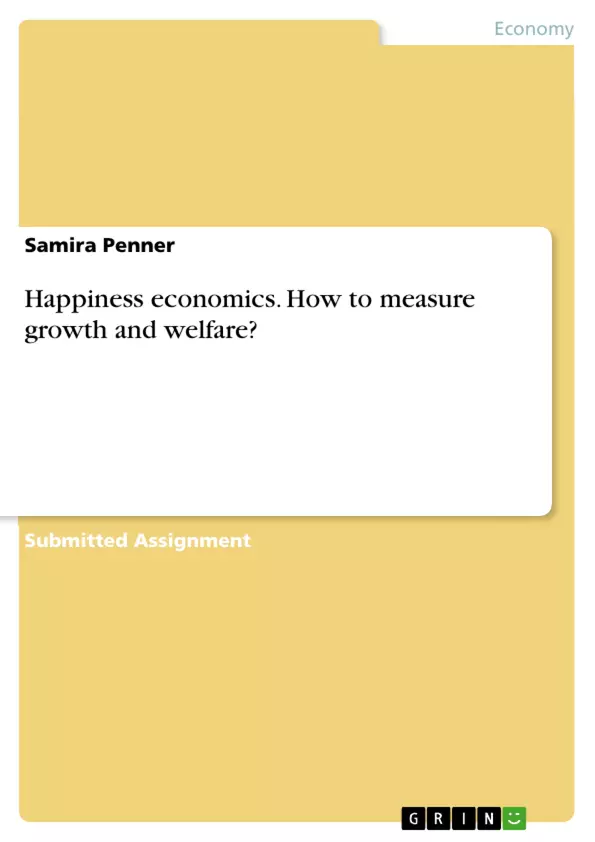Everybody wants to be happy. There is probably no other goal in life that commands such a high degree of consensus, because to most people, happiness is all they want and try to achieve. Thus, happiness has long been considered the ultimate human goal in life. Even Aristotle considered happiness the ultimate motive for all human action. In today’s consumer culture, this happiness is often pursued in the marketplace. Yet, economists have refused to deal with individuals’ happiness a long time but considered it to be an “unscientific” concept.
However, in the past few years the situation has changed and economic science has experienced the introduction or reintroduction of individuals’ happiness into economics. While traditionally economics has almost exclusively focused on consumption, wealth and other monetary indicators to measure individuals’ well-being, it now more and more adopts the subjective notion of well-being to analyze how economic determinants such as income, wealth and employment as well as non-economic determinants such as personality traits and socio-demographic factors affect individuals’ utility and life satisfaction. Although Easterlin already examined correlations between economic growth and welfare and individual happiness, it still took about twenty years for the idea to take off. In the meantime, happiness research and economics has provided many interesting findings and insights. Today, there is a wide range of literature on the so-called happiness economics that analyses individuals’ well-being and its determinants.
Inhaltsverzeichnis (Table of Contents)
- 1. Introduction
- 1.1. Problem Description
- 1.2. Objectives
- 1.3. Scope of Work
- 2. Theoretical Approach: Economics of Happiness
- 2.1. Economic Growth and Welfare
- 2.2. Happiness Economics
- 2.2.1. Definition and Concept of Happiness
- 2.2.2. Happiness Research and Measurement
- 3. Practical Analysis: Relevance of Economic Performance on Happiness
- 3.1. Economic Determinants on Happiness
- 3.1.1. Income
- 3.1.2. Employment
- 3.1.3. Inflation
- 3.2. Critical Review
- 4. Closing
- 4.1. Summary
- 4.2. Conclusion
- 4.3. Future Outlook
Zielsetzung und Themenschwerpunkte (Objectives and Key Themes)
This assignment delves into the field of happiness economics, aiming to understand how economic growth and welfare are measured and how they relate to overall well-being. It explores the concept of happiness economics, its theoretical framework, and its practical implications for economic performance.
- Measuring economic growth and welfare
- The concept of happiness economics
- Relationship between economic determinants and happiness
- Critical review of existing research and perspectives
- Future outlook and implications for policy and research
Zusammenfassung der Kapitel (Chapter Summaries)
- Chapter 1: Introduction: This chapter introduces the topic of happiness economics and outlines the problem description, objectives, and scope of the assignment.
- Chapter 2: Theoretical Approach: Economics of Happiness: This chapter delves into the theoretical framework of happiness economics, exploring the relationship between economic growth, welfare, and happiness. It discusses the definition and concept of happiness and examines methods of measuring happiness.
- Chapter 3: Practical Analysis: Relevance of Economic Performance on Happiness: This chapter explores the practical implications of economic performance on happiness. It investigates various economic determinants of happiness, such as income, employment, and inflation, and analyzes their impact on subjective well-being.
Schlüsselwörter (Keywords)
The key terms and concepts explored in this assignment include happiness economics, economic growth, welfare, subjective well-being, income, employment, inflation, and critical review of research findings.
- Quote paper
- Samira Penner (Author), 2016, Happiness economics. How to measure growth and welfare?, Munich, GRIN Verlag, https://www.grin.com/document/415929



